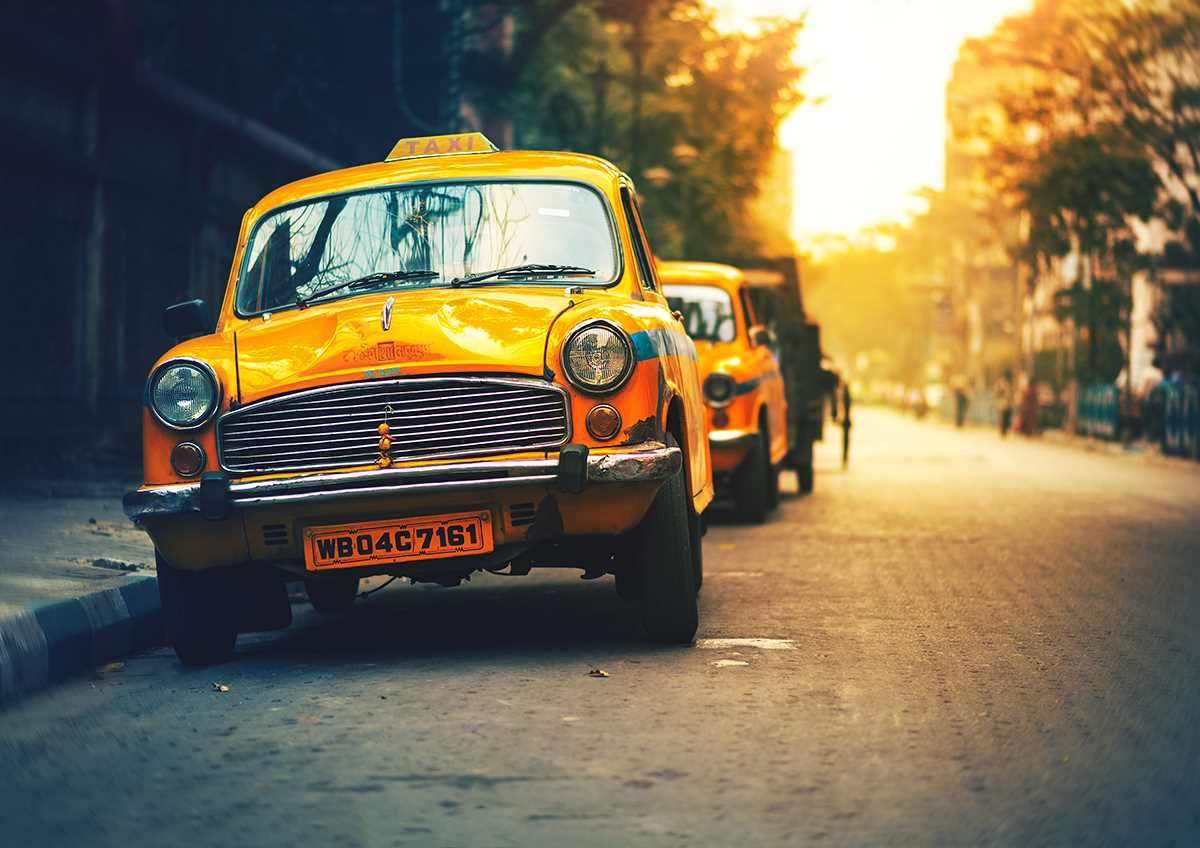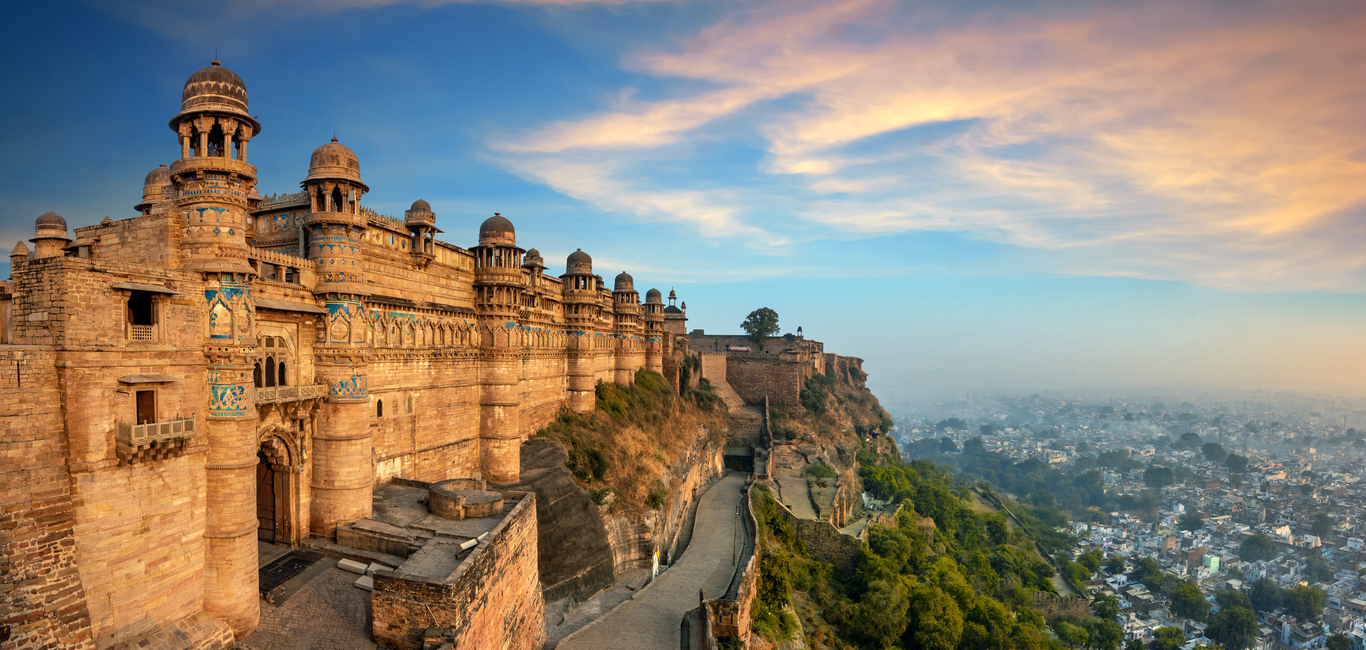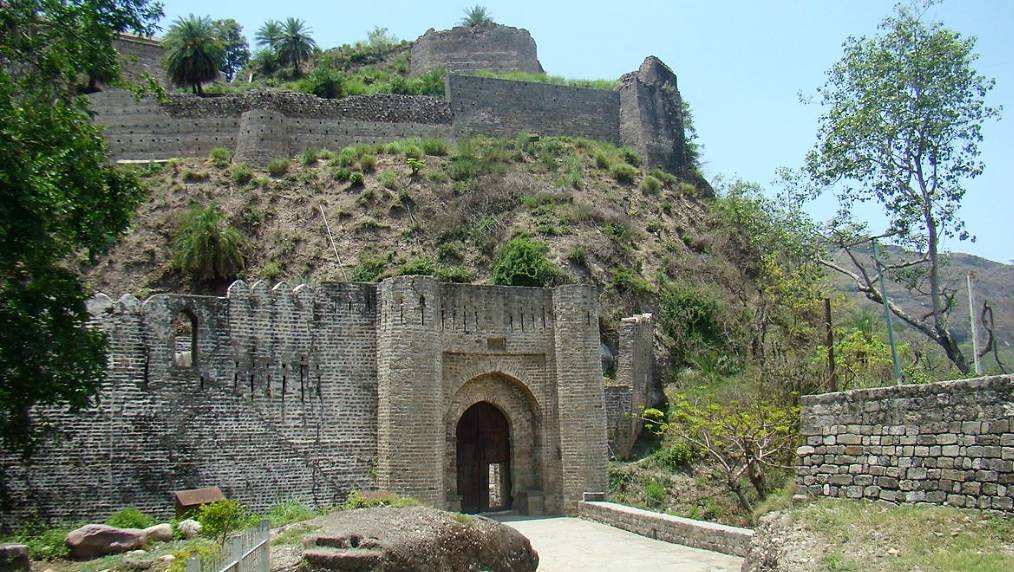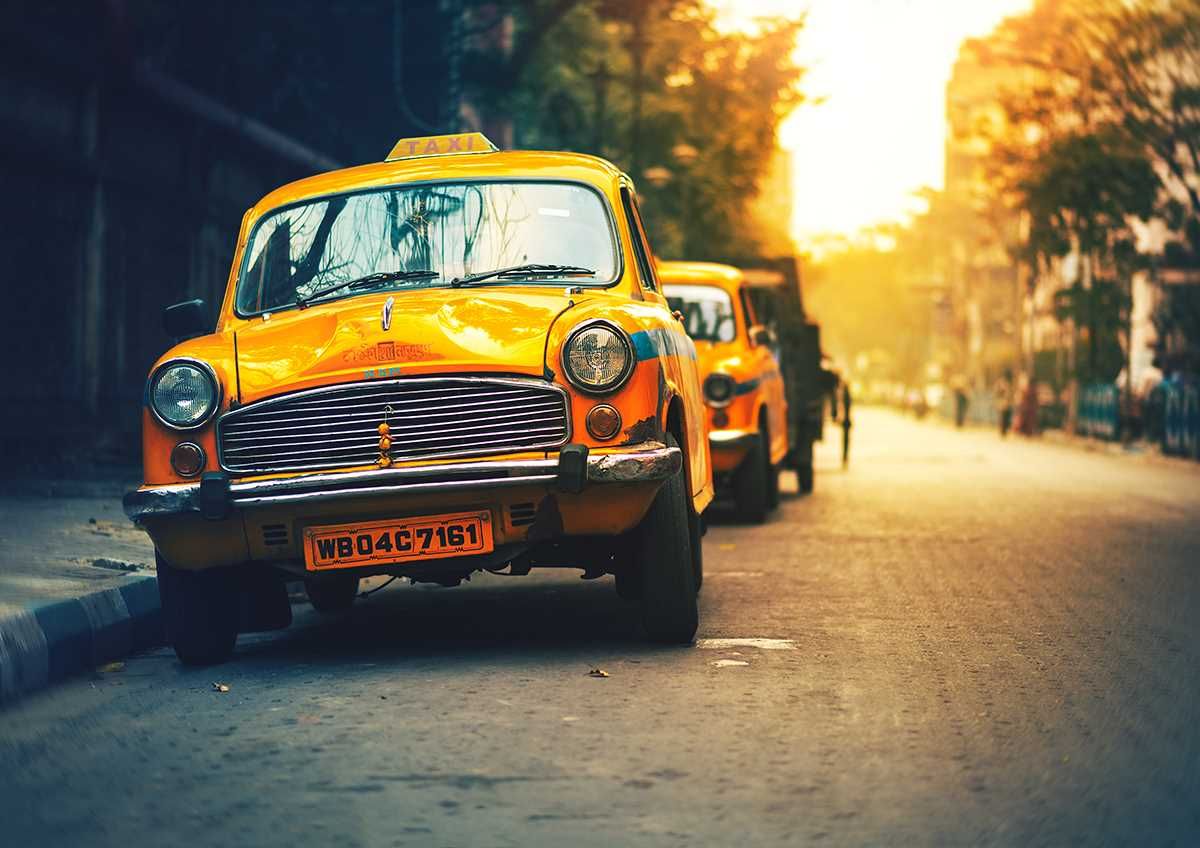
Kolkata, the “Paris of the East” is a medley of moods, styles, cultures, politics, industry, and commerce. The East India Company first set up a trading post at Sutanati and built the Old Fort William in 1696. The city went on to become the showpiece capital of the British Raj and the greatest colonial city of the Orient. It became a leading center of commerce and port of call for eastbound vessels. Kolkata remained the capital of British India till 1912, but it continued to be a major industrial and cultural center. The city is a kaleidoscope of various contrasts, which are unseen anywhere else in the world. It is a unique blend of ancient and anon, occidental and oriental styles, skyscrapers and Victorian edifices and heaven of rich as well as poor. The city’s rich cultural, literary and religious flavors are reflected in its fine arts, writing, music, dance, and theatre. Kolkata, the city of love, hope and joy are ever fascinating, effervescent and teeming with life and traditions.
Victoria Memorial
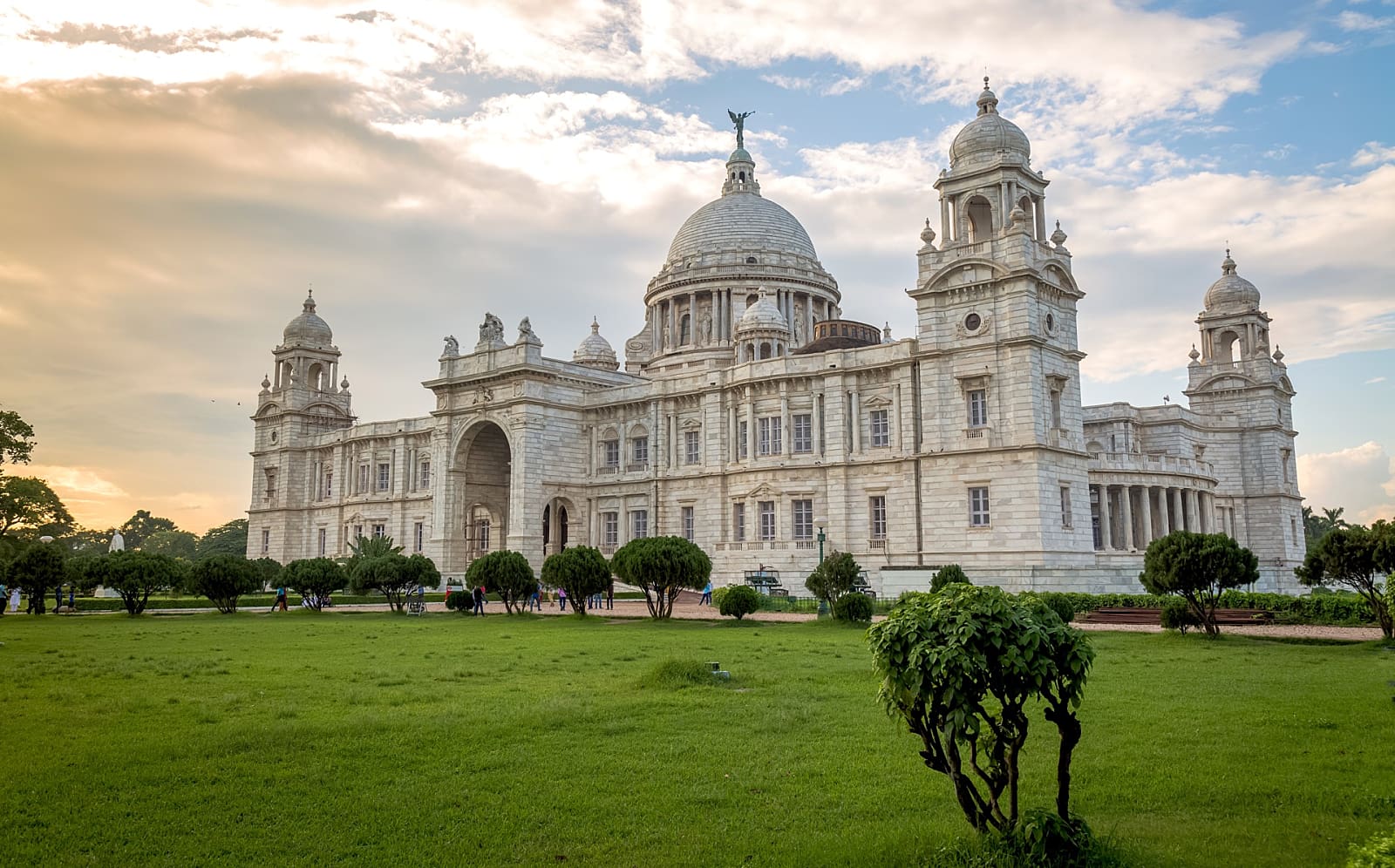
This white marble marvel is Kolkata’s most distinguished landmark. In 1905, Lord Curzon conceived the idea of its construction and the foundation stone was laid by Prince of Wales (King George V) on 4th Jan 1906. It was inaugurated by the Duke of Windsor on 21st Dec. 1921 and is now the most prolific reminder of the British rule in India. The majestic 61-meters high white edifice with its formal gardens and watercourses sprawls across an area of 26 hectares and is located at the southern end of “The Maidan’. It was designed by Sir William Emerson blending British and Mughal architecture styles. A 4.9-meters black bronze statue of an angel known as Victory, holding a bugle in her hand was placed at the apex of the dome above the memorial. The 4.5-tonnes statue is fixed to its pedestal with ball bearings and rotates when the wind is strong enough. The memorial houses rare memorabilia from the colonial days and over 3,500 exhibits are displayed in its galleries. The evening Sound and Light show are worth seeing.
The Maidan

This huge expanse of the green area known as the “lungs of the city” and is rated as the finest gift of the British to India.
BBD Bagh (Dalhousie Square)

When Kolkata was the capital of the British Raj. Dalhousie Square held a coveted position and was the center of power. It still Kolkata’s commercial hub and was renamed as BBD or Benoy-Badal-Dinesn Bagh after the three martyrs of Bengal. The momentous square has a large Lal Dig tank in the center, surrounded by several historical buildings.
Writers Building
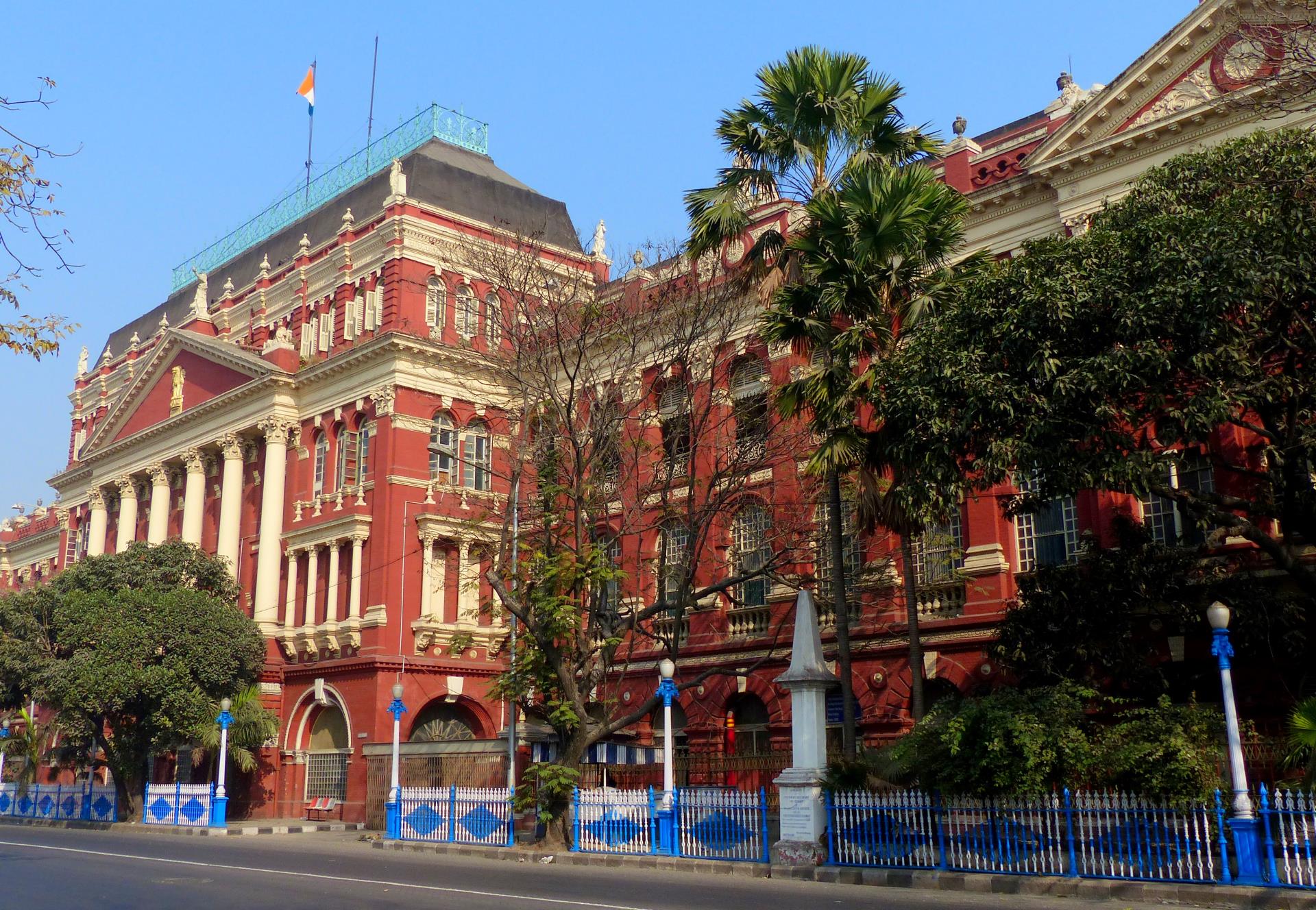
This 14 storeyed building to the north of BBD Bagh was built in 1880, for the clerks or “writers” of British East India Company, who worked and lived here. Today, it houses the secretariat of the West Bengal Government.
Fort William
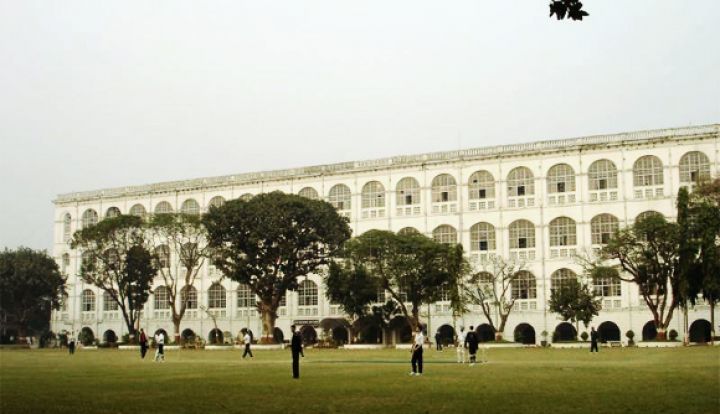
This irregular octagon-shaped fort on the banks of river Hugli was built in 1781, after the destruction of the old fort in 1756. There is a museum displaying arms and armors, photographs of the Burma campaign and the Bangladesh Liberation War. It also has a section on the people and handicrafts of north-east India.
Shahid Minar (Ochterlony Monument)
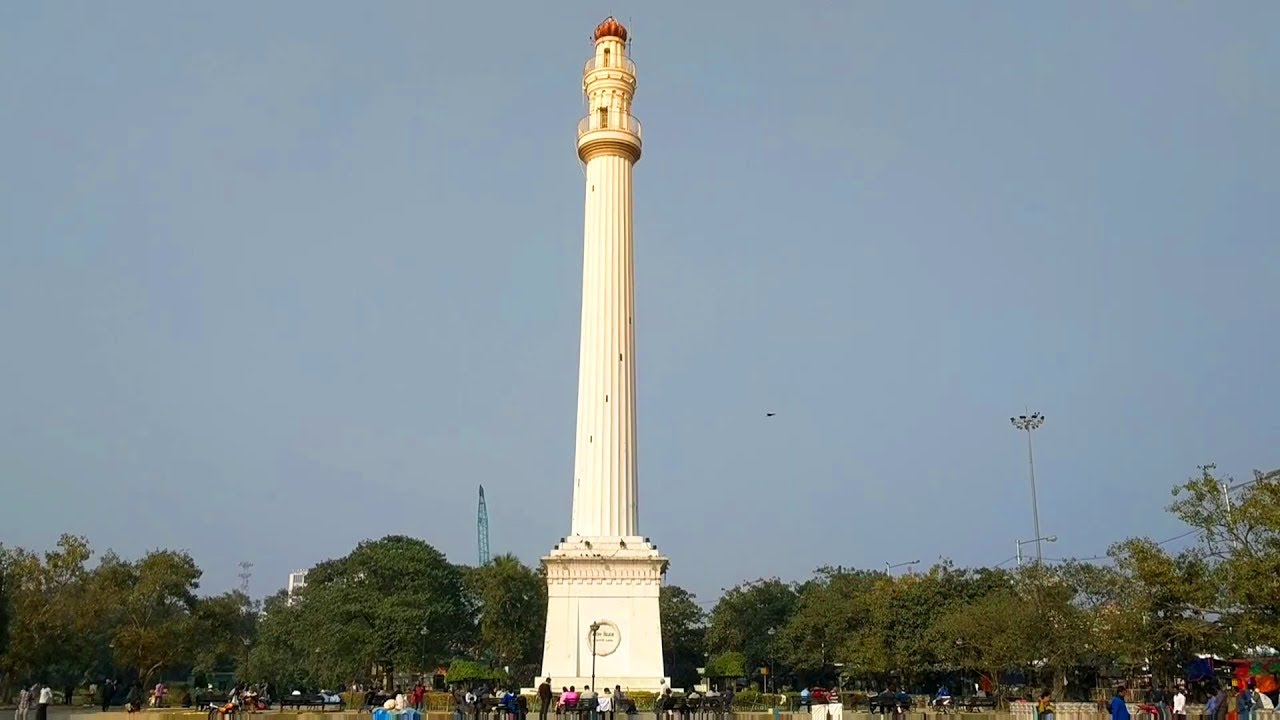
The 52 meters tall tower, dominating the Chowringhee skyline was built in 1828, to commemorate British East India Company’s victory in the Nepal Campaign of 1814 – 1816. In 1968, the minaret was named Shahid Minar in memory of the Indian freedom fighters.
Birla Planetarium
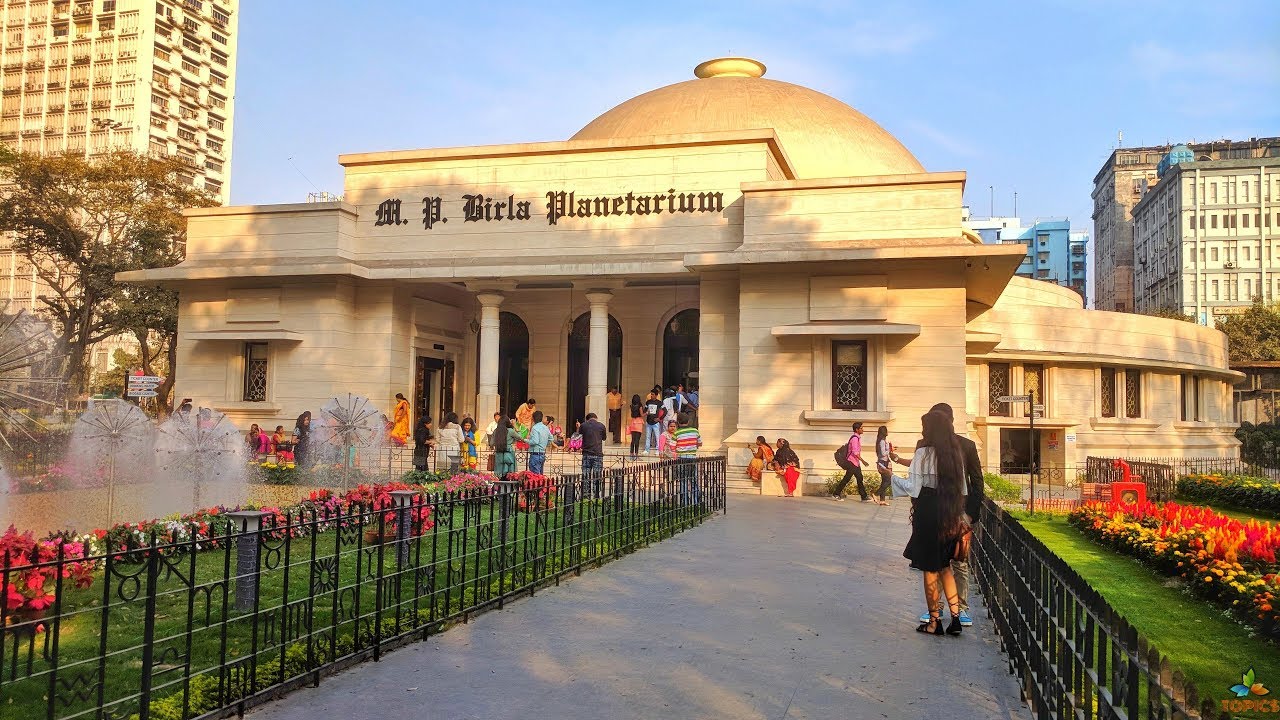
It was established on 29th Sept. 1962 and is one of the largest in the world. Stars and constellations are projected on the domed ceiling of the planetarium.
Academy of Fine Arts
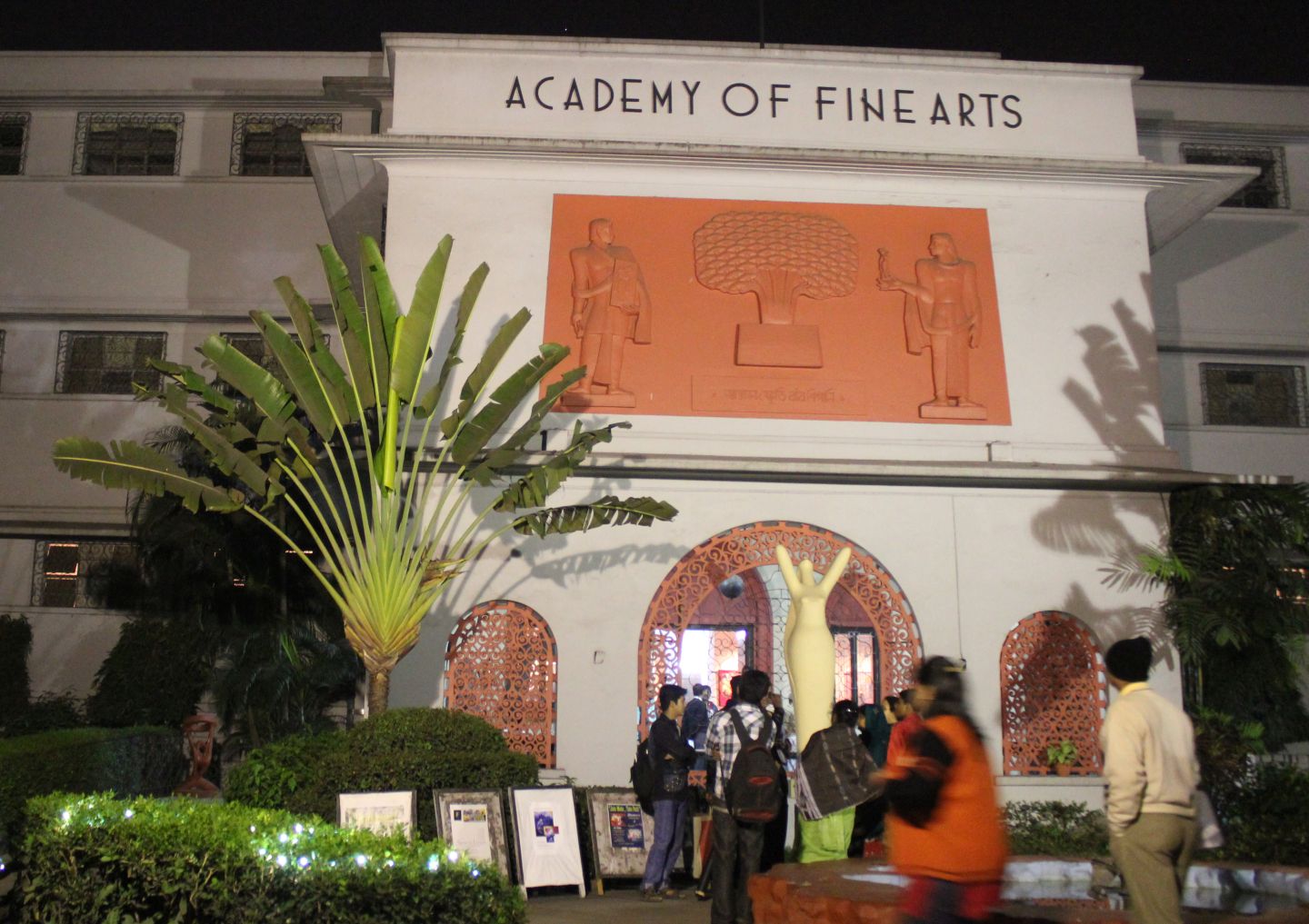
This eminent center for arts was set up in 1933, at the initiative of Lady Ranu Mukherjee. Rabindra Sadan, a theatre cum concert hall and Nandan, a film center are located nearby. The Bangla Akademi and the Kolkata Information Centre are also located here.
Jorashanko Thakurbari
 This home of Tagores since the 18th century was a major center for Bengali arts and culture during the 19th century. It has now been converted into the Rabindra Bharati University. A 45-minute light-and-sound program, based on the life and times of the Tagore family is held here in the evenings.
This home of Tagores since the 18th century was a major center for Bengali arts and culture during the 19th century. It has now been converted into the Rabindra Bharati University. A 45-minute light-and-sound program, based on the life and times of the Tagore family is held here in the evenings.
Asiatic Society
 It is located at Park Street and was established in 1784, for promoting the study of Indology, literature and scientific research. The society started a public museum in 1814 and is the first modern museum in Asia. It houses a rich collection of art and antiquities. There is also a huge library.
It is located at Park Street and was established in 1784, for promoting the study of Indology, literature and scientific research. The society started a public museum in 1814 and is the first modern museum in Asia. It houses a rich collection of art and antiquities. There is also a huge library.
Indian Museum
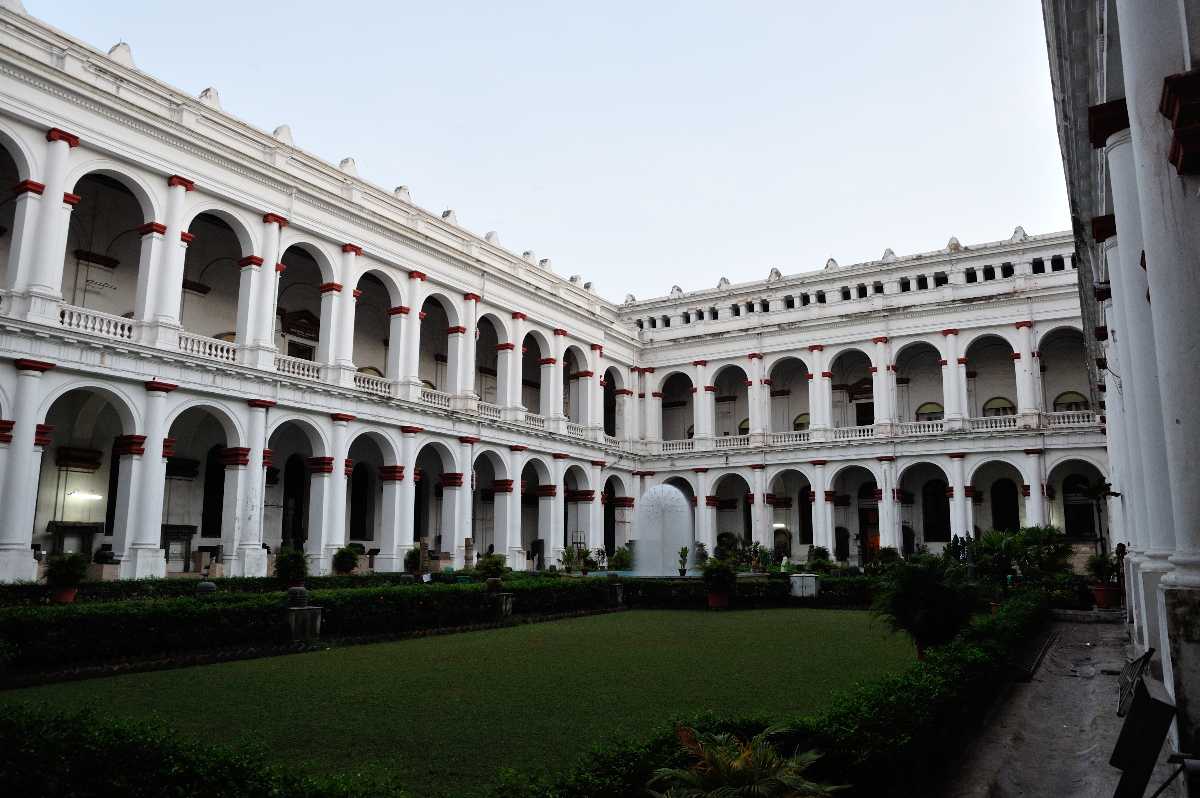 This extensive museum popularly known as Jadu Ghar (Magic House) at J. Nehru Road is the oldest institution of its kind not only in India but also in the entire Asia-Pacific region. It was first established at the Asiatic Society on 2nd Feb. 1814. In 1878, it was transferred to this huge classical-style building. The museum has over 60 galleries dealing in six departments – Art, Archaeology, Anthropology, Geology, Zoology, and Botany.
This extensive museum popularly known as Jadu Ghar (Magic House) at J. Nehru Road is the oldest institution of its kind not only in India but also in the entire Asia-Pacific region. It was first established at the Asiatic Society on 2nd Feb. 1814. In 1878, it was transferred to this huge classical-style building. The museum has over 60 galleries dealing in six departments – Art, Archaeology, Anthropology, Geology, Zoology, and Botany.
Marble Palace
 This Gothic-style mansion was built in 1835, byRaja Rajendra Mullick, a wealthy Bengali merchant. It has ornate objects d’art and paintings, studiously collected from auctions and dispossessed households across the globe.
This Gothic-style mansion was built in 1835, byRaja Rajendra Mullick, a wealthy Bengali merchant. It has ornate objects d’art and paintings, studiously collected from auctions and dispossessed households across the globe.
National Library
 It is housed in an elegant building which was originally the summer house of Prince Azim-us-Shan, the Viceroy of Bengal and Bihar. Lord Curzon officially inaugurated the Imperial Library on 30th January 1903, at the Metcalfe Hall and was renamed as National Library in 1948. The library has over 2 million books and 2 million documents.
It is housed in an elegant building which was originally the summer house of Prince Azim-us-Shan, the Viceroy of Bengal and Bihar. Lord Curzon officially inaugurated the Imperial Library on 30th January 1903, at the Metcalfe Hall and was renamed as National Library in 1948. The library has over 2 million books and 2 million documents.
Howrah Bridge or Rabindra Setu
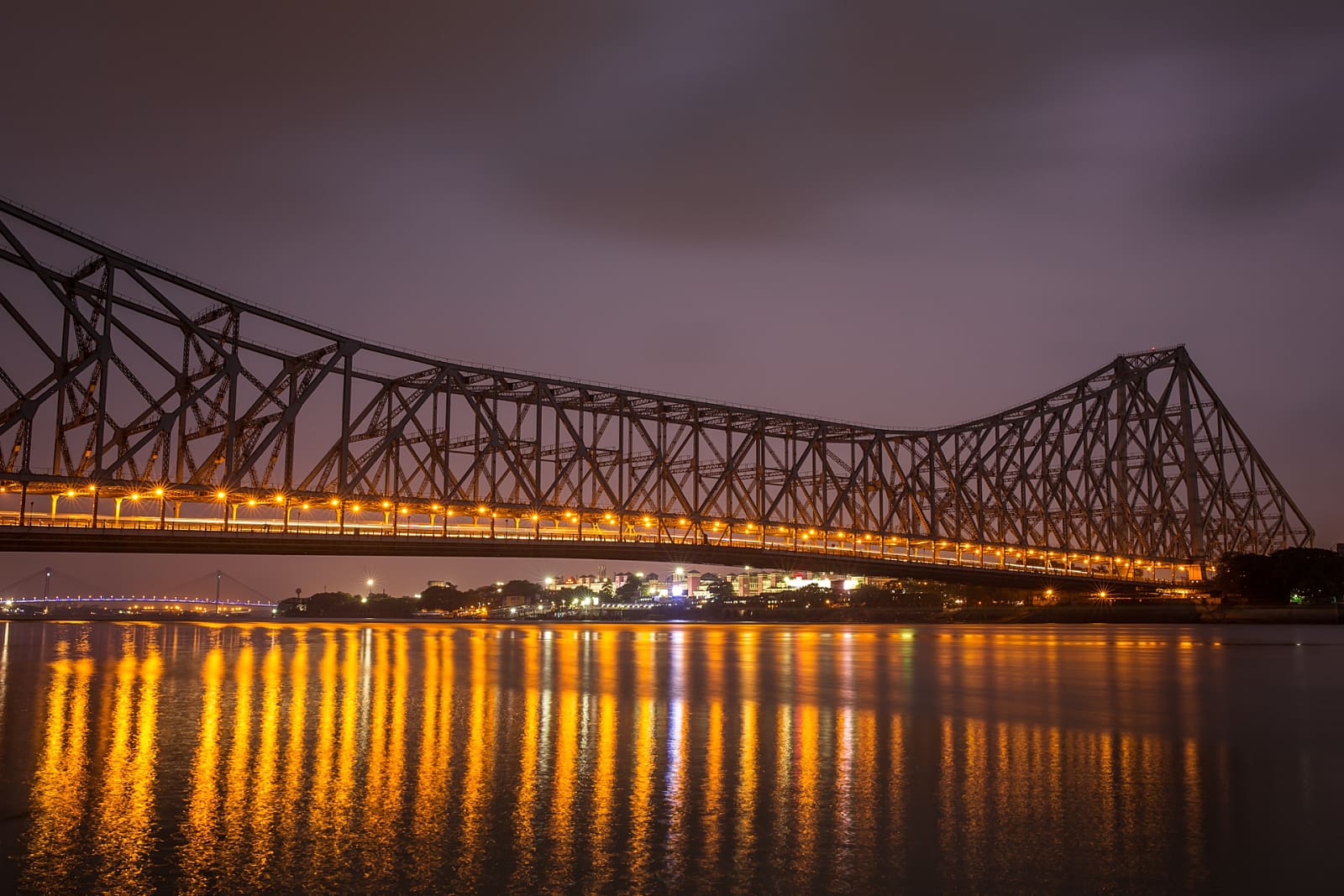 It is the major landmark and the gateway to the city of Kolkata. The 97m. high and 705m. long bridge built over river Hugli is the world’s busiest bridge.
It is the major landmark and the gateway to the city of Kolkata. The 97m. high and 705m. long bridge built over river Hugli is the world’s busiest bridge.
Vidyasagar Setu
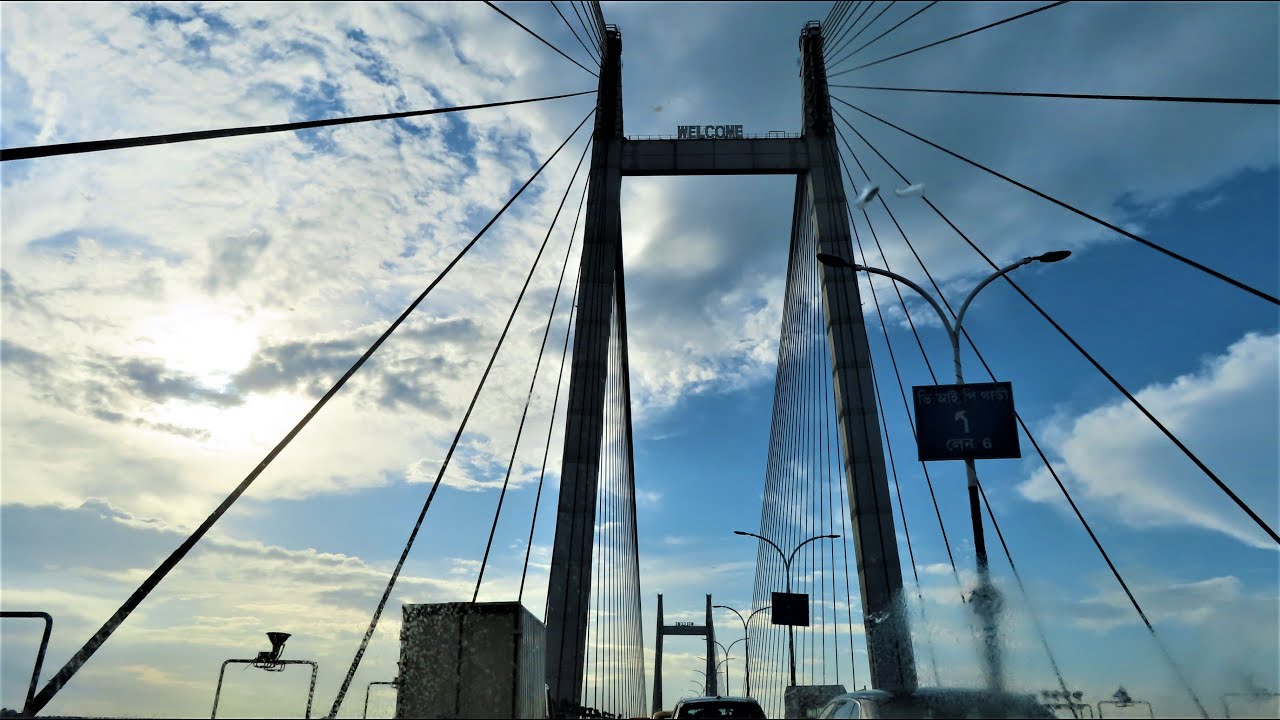 It lies to the south of Howrah Bridge on the river Hugli. The construction work took 22 years and cost Rs. 3.88 billion. The 457 m. long and 115 m. the wide bridge is supported by 121 wire cables, and stands on four pylons, on a foundation that is 100 m. deep.
It lies to the south of Howrah Bridge on the river Hugli. The construction work took 22 years and cost Rs. 3.88 billion. The 457 m. long and 115 m. the wide bridge is supported by 121 wire cables, and stands on four pylons, on a foundation that is 100 m. deep.
Science City
 It is located at the intersection of the Eastern Metropolitan Bypass and the Park Circus Connector and is the only venture of its kind in entire Asia. Some of the popular sections are space theatre, space flight simulator, recreated Jurassic forest aviary, etc.
It is located at the intersection of the Eastern Metropolitan Bypass and the Park Circus Connector and is the only venture of its kind in entire Asia. Some of the popular sections are space theatre, space flight simulator, recreated Jurassic forest aviary, etc.
Sacred Sites:-

Kalighat Kali Temple:
It is one of the most important shrines of goddess Kali and a major site of Shakti worship in the country. The temple was originally built in 1809, at Kalighat on the banks of the river Hugli and enshrines an awe-inspiring black stone idol of goddess Kali decorated with gold and silver.
Belur Math:
It is the international headquarters of the Ramkrishna Mission. Swami Vivekananda established the shrine in 1899, by placing the ashes of Sri Ramkrishna at this spot. The unique architecture of the shrine reflects the message of religious fraternity, as it represents a church, a temple, and a mosque when viewed from different angles. The Sri Ramkrishna Museum was set up with the assistance of the National Council of Science Museum. It houses articles associated with Sri Ramkrishna, Ma Sarada and Swami Vivekananda.
Dakshineswar Kali Temple:
The famous temple built in 1847, by Rani Rashmoni on the other side of Hugli river is associated with Sri Ramkrishna, who attained enlightenment over here. The main shrine known as the Navaratna Temple enshrines a silver lotus with thousand petals, on which is placed the idol of Goddess Kali, standing on the prostrate body of Lord Shiva. The complex also has twelve temples dedicated to Lord Shiva.
Sitambara Jain Temple:
This magnificent temple is dedicated to Sheetalnathji, the 10th Jain tirthankar. It was built in 1867 and is a collection of four pagodas like shrines set in geometrical gardens and ponds.
Birla Temple:
The beautiful temple near Gariahat market was built in 26 years at a cost of about 180 million rupees and inaugurated in 1996. Its excellent architecture blends traditional artistry with modern technology.
Armenian Church:
It was built in 1724, by Cavond, an Armenian and is one of the oldest churches in Kolkata.
St. Paul’s Cathedral:
The city was built between 1839 and 1847 in Indo-Gothic style. Other important churches are, St. Andrew’s Church, St. John’s Church, etc.
Nakhoda Mosque:
It is located to the north of BBD Bagh and is the largest mosque in Kolkata. The present structure was built by Abdur Rahim Osman in 1942.
Sagardwip:
The sacred site 78 kms. from Diamond Harbour and 128 kms. from Kolkata lies at the confluence of Ganga river and Bay of Bengal and is considered to be one of the holiest sites of Hindu pilgrimage. The three days annual Ganga Sagar Mela, held here in mid-January, on Makar Sankranti, attracts millions of devotees who take a holy dip at the confluence. It is believed that Kapil Muni, a legendary sage who reduced King Sagar’s 60,000 sons to ashes had his ashram over here about 5,000 years ago. In 1947, a temple of Ganga Devi was built to mark its existence. The shrine is visited by numerous devotees. Scenic Sagardwip is also an excellent site to view sunset and sunrise.
Gardens, Parks & Theme Parks:-
 Botanical Gardens:
Botanical Gardens:
The famous garden at Shibpur, 10 kms. south of Haora station was established in 1786, by Colonel Kyd and is the oldest botanical garden in the country. It sprawls across an area of 273 acres and has over 35,000 varieties of fruits and flowers, besides 15,000 other plant specimens. But, the star attraction is the 240 years old Banyan tree, which reaches up to a height of 24.5 meters and is spread over a circumference of 420 meters, making it the world’s largest banyan tree.
Eden Gardens:
It sprawls over an area of 50 acres and was named after Emily and Fanny Eden, sisters of Lord Auckland. The beautiful garden to the north-west corner of the Maidan has a tiny Burmese pagoda set amidst a small lake. It has several species of local trees. The famous Eden Gardens Stadium also lies within the garden.
Horticultural Gardens:
The garden amid Alipore was established in 1820, by William Carey. An annual flower show is held here in February.
Zoological Gardens:
This extremely popular Zoo is about 3 kms. south of Park Street in Alipore. It was founded in 1876 and has a large collection of birds and animals.
Rabindra Sarobar:
This pleasant picnic spot is located south of Chowringhee. It also has an artificial lake where water sports are held.
NICCO Park:
It is located at Salt Lake and provides mind-boggling fun and entertainment to children as well as adults.
Around Kolkata:-

Bakkhali (130 kms.):
It is the second most important beach of West Bengal after Digha.
Barakpur (24 kms.):
It was once the cantonment of the British and is named after the “barracks’, where troops have been stationed since 1772. The town is associated with the Sepoy Mutiny of 1857 Mangal Pandey, the famous martyr was hanged at Barrackpur’s Latbagan. A memorial to him was erected at Dhubighat. Other attractions are Mangal Pandey Park, Gandhi Ghat and Rani Rashmoni’s Kali Mandir.
Barddhaman (95 kms.):
The historic site on the banks of river Damodar is named after Mahavir Barddhaman, the 24th Jain tirthankar. The main attractions are – 108 Shiva shrines built-in 1789 by Rani Bishnukumari; Vijay Toran or Curzon Gate; Rose Garden; Meghnad Saha Planetarium and the Science Centre of the University.
Bandel (48 kms.):
It lies on the banks of river Hugli and was the first European settlement in Bengal. The Portuguese Church and the Monastery were built here in 1599 and destroyed by Shah Jahan in 1640. The church was rebuilt in 1660 and is the oldest in the State.
Chandannagar (39 kms.):
This former French colony on the banks of the river Hugli is dotted with churches, convents and other relics of colonial past. A picturesque promenade here is ideal for strolls. The town is also known for the Jagaddhatri Puja.
Chunchura (45 kms.):
It was under Dutch occupation between 1656 and 1825 and the Fort Gustavus was built in 1628 by them. Bankim Chandra Chattopadhyay, composed ‘Bandemataram” national song of India at the Bandemataram House on Joraghat.
Diamond Harbour (48 kms.):
This popular picnic spot near the confluence of Hugli River and Bay of Bengal has accessible by road and rail. It was once the main port of East India Company a ruin of a fort and an old lighthouse. Cruising over the river waters is quite interesting.
Digha (174 kms.):
This most popular beach of West Bengal is lined by Casuarina trees and is ideal for swimmers. The Science Centre, Marine Aquarium and Amravati Lake are worth visiting.
Hugli (47 kms.):
Historical Hugli was a flourishing trade center of Bengal, even before Kolkata. In 1537, the Portuguese settled here but were driven away in 1632 by Mughal emperor Shah Jahan. In 1651, the British East India Company established a factory here. The relics of the colonial era can be seen in numerous old buildings, churches, and graveyards. The famous Imambara was built here in 1836, by Hazi Mohammad Mohsin.
Sabujdwip (75 kms.):
Sabujdwip or the Green Island’ set on the Confluence of the Behula and Hugli rivers 1s an ideal picnic spot.
Srirampur (24 kms.):
This Danish Settlement from 1616 to 1845 later became a center of English missionaries. It also played an important role in the Bengal Renaissance. The old Danish buildings, including the Danish Governor’s Palace, the Roman Catholic Church, and St. Olaf Church stand testimony to the bygone era. A museum at Serampore College, houses exhibits of missionaries.
Nabadwip (114 kms.):
Nabadwip, the ‘Varanasi of Bengal’ is set on the confluence of the Bhagirathi and Jalangi rivers. It was the capital of ancient Bengal and is named after the nine islands of Jalangi river. Nabadwip is the birthplace of Sri Chaitanya (1486-1533), the founder of Vaishnava sect and is the seat of Vaishnava culture in Bengal. The Raasch fest: vai held in the month of Kartik-Agrahayan is a major attraction for the pilgrims. Mayapur, the headquarters of ISKCON, the contemporary face of Vaishnavism lies across the river from Nabadwip. The stupa-like white temple belongs to ISKCON.

